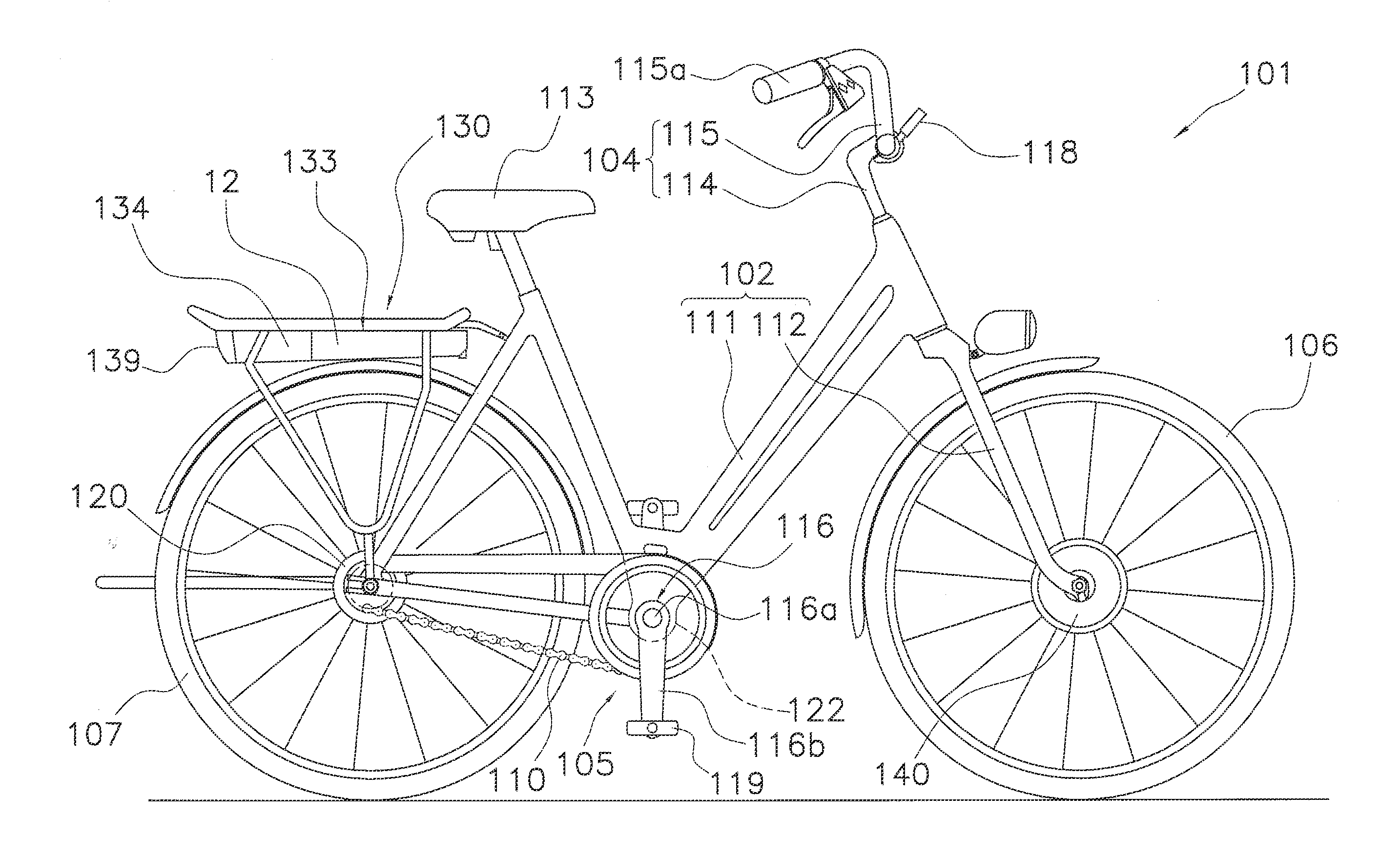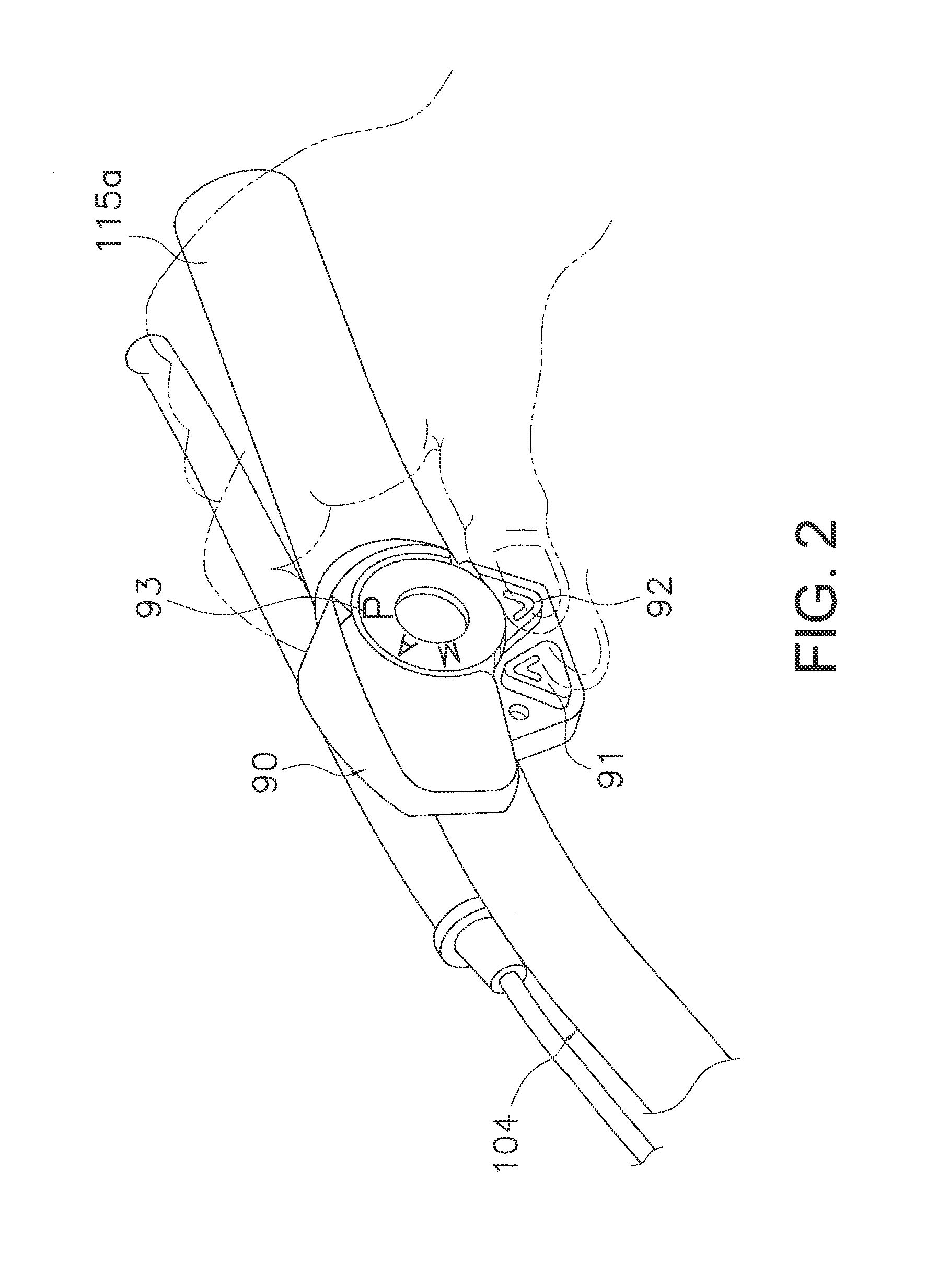Bicycle control apparatus
a control apparatus and bicycle technology, applied in the direction of cycle equipment, electric propulsion mounting, hybrid vehicles, etc., can solve the problem of insufficient assistance force, and achieve the effect of improving riding comfort, suppressing the decrease of assistance force, and reducing the assistance for
- Summary
- Abstract
- Description
- Claims
- Application Information
AI Technical Summary
Benefits of technology
Problems solved by technology
Method used
Image
Examples
first embodiment
[0036]FIG. 1 shows a bicycle 101 that employs a bicycle control apparatus according to a The bicycle 101 comprises chiefly a frame 102, a handlebar unit 104, a display device 124, a front wheel 106, a rear wheel 107, a chain 110, a crank 116, an internal transmission 120, a rear carrier 130, a rechargeable battery 134, an assistance motor unit 140, a controller 117 that constitutes a part of the bicycle control apparatus, and a front brake device and a rear brake device that are not shown in the drawings. The chain 110, the crank 116, the controller 117, the internal transmission 120 and the assistance motor unit 140 are parts of a bicycle drive system of the bicycle 101 for propelling the bicycle 101.
[0037]The frame 102 has a frame body 111 and a front fork 112. The front fork 112 is attached to a frontward portion of the frame body 111 such that it can pivot about a slanted axis. A saddle 94, the handlebar unit 104, and other components are attached to frame 102.
[0038]The crank 1...
second embodiment
[0065]FIG. 6 shows a bicycle 201 that employs a bicycle control apparatus according to the The bicycle 201 comprises chiefly a frame 202, a handlebar unit 204, a display device 224, a front wheel 206, a rear wheel 207, a chain 210, a crank 216, an external transmission 220, a rear carrier 230, a rechargeable battery 234, an assistance motor unit 240, a controller 217 that constitutes a part of bicycle control apparatus, and a front brake device and a rear brake device that are not shown in the drawings.
[0066]The frame 202, the crank 216, the handlebar unit 204, the rear carrier 230, the assistance motor unit 240, the pedaling three sensor 195, and the display device 224 are basically the same as in the first embodiment. Therefore, the reference numerals of these parts shown in FIGS. 6 and 7 are the reference numerals of the first embodiment with 100 added thereto and explanations of these parts are omitted. Meanwhile, the front fork 212 is provided with a suspension function. Also,...
PUM
 Login to View More
Login to View More Abstract
Description
Claims
Application Information
 Login to View More
Login to View More - R&D
- Intellectual Property
- Life Sciences
- Materials
- Tech Scout
- Unparalleled Data Quality
- Higher Quality Content
- 60% Fewer Hallucinations
Browse by: Latest US Patents, China's latest patents, Technical Efficacy Thesaurus, Application Domain, Technology Topic, Popular Technical Reports.
© 2025 PatSnap. All rights reserved.Legal|Privacy policy|Modern Slavery Act Transparency Statement|Sitemap|About US| Contact US: help@patsnap.com



